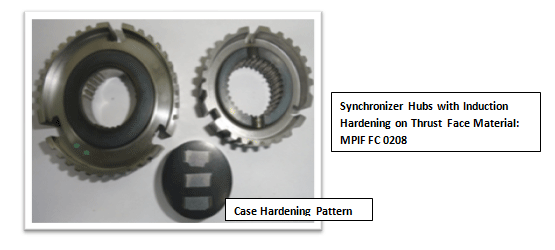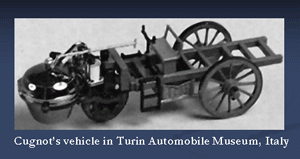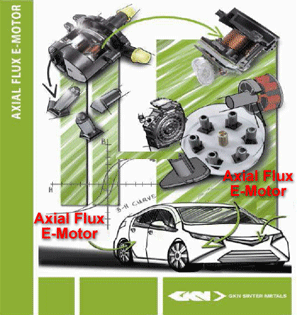PM-12 India: Developments in Powder Metallurgy Components
Antonio Casellas, GKN Sinter Metals, Germany, in his talk on “Net Shape Solutions in Powder Metallurgy – Design for PM”, presented a selection of complex component shapes for various functions that demonstrate PM’s credentials as green technology. This green potential, it was suggested, is because PM is more focussed on materials, methods and processes rather than on the final product.
A case in point is the development of a new generation of closed loop controlled presses that make a third level during compaction, as well as undercuts, possible. The design advantages of PM were demonstrated through a number of components.
One example was near net shape differential gears produced with higher powder densities, higher core strengths, and two to three times higher safety factors, plus 25% weight saving and 30% less wastage.
Additionally, camshafts are assembled using chipless production, with multi-function sensor rings and high precision sprockets and lobes that minimise grinding.
The advantages of proper PM tool designs in the production of complex shock absorber parts, PTFE banded pistons, parts for adjustable steering columns, multi level synchroniser hubs and EPS belt drive system were also discussed.
Product ideas that demonstrate PM as a green technology include wind power and solar power systems using gear boxes and generators based on SMC’s, automotive applications that use axial flux electric motors, solid oxide fuel cells using tape cast or rolled inter connects, cathodes and anodes, three layer membrane cartridges for surface filtration and connecting rods and piston crowns for geothermal power generators, etc.
Dr. Brian James, Hoeganaes Corporation, USA, discussed the development of less expensive PM materials in his presentation, “Copper-Free and Nickel-Free PM Steels for Powder Metallurgy Parts”. These are the synergistic combinations of Mn and Mo in steels that can be sintered at 1120°C in a mixture of nitrogen and hydrogen. Sinter hardening is achieved by accelerated cooling or by post sintering induction hardening. The performance, it was stated, is equal to the more highly alloyed hybrid and diffusion-alloyed PM materials that contain nickel, copper and molybdenum.
Dr. François Chagnon, Rio Tinto Metal Powders, Canada, investigated the “Effect of Post-Sintering Cooling Rate on Properties of Diffusion Bonded PM Steels”. PM parts made with diffusion bonded powders exhibit a heterogeneous microstructure, depending on the carbon content.
Diffusion bonded powder with pre-alloyed molybdenum is found to display a homogeneous distribution of this element when compared to those where Mo was diffusion bonded. Higher apparent hardness, particularly with higher carbon content and faster cooling rates, was observed in specimens made with diffusion bonded powder containing pre-alloyed Mo, thus making the steels highly suited for sinter hardening applications.
Narsi Chandrachud, GKN Sinter Metals Pvt. Ltd., India, discussed various aspects relating to the “Induction Hardening of PM Parts”. Some of the advantages, it was reported, are localised hardening with low distortion, excellent reproducibility with modern machines, automation, and easy integration in production lines/cells.

Advantages of the induction hardening of PM parts are localised hardening with low distortion, excellent reproducibility with modern machines, automation, and easy integration in production lines/cells. Courtesy GKN Sinter Metals Pvt. Ltd., India
It is also possible to make part specific machine designs and the process is less harmful to the environment thanks to very efficient heating and the recirculation of the water soluble polymer based quenching solution. The process results in minimum scaling, reduced post heat treatment operations, and enables machining of other areas after hardening.
The main advantage is the possibility of using unalloyed steel. It was stated that the cost of an FC 0208 part with induction hardening is lower by 40-45% as compared to an FD 0205 material with quench and temper process or FLC material with sinter hardening.
The benefits of induction hardening, however, come with their own challenges. The porosity present in sintered steels results in decreased thermal conductivity, leading to reduced soaking action from high to low temperature, higher temperature gradients resulting in higher thermal stresses during heating, and slower cooling during quenching.
Porosity increases electrical resistivity leading to larger heat penetration depth and decreased magnetic permeability, resulting in a greater penetration depth and lower electrical efficiency. Even the hardenability and structural homogeneity are affected in the presence of porosity.
These problems are solved by using steel parts with a minimum density of 7 g/cc for shapes involving undercuts, internal/external splines, gear teeth, slots, sharp corners etc., and the use of higher energy input at higher frequency than for equivalent wrought parts. Higher graphite levels are used in comparison to wrought products due to reduced hardenability, and the segregation of graphite and other alloying elements is avoided.
High temperature sintering is used as it gives more favorable pore shapes and well a diffused microstructure.
Dr. A. N. Tiwari, PM consultant, Mumbai, India, related the “Mechanical Properties of PM Materials to Composition, Microstructure and Relative Density”. The role of alloying elements and alloying methods with specific reference to PM gears were discussed.
Densification and heat treatment processes such as warm compaction, sinter forging, surface densification, sinter hardening, and sinter carburising were also described.
Dr. Malobika Karanjai, International Advanced Research Centre for Powder Metallurgy and New Materials, India, traced the historical evolution of friction materials in her presentation “Future Trends in Design of Friction Materials for Clutch and Brake Applications”.
Conventional Automatic Transmission’s (CAT), it was stated, offer poor fuel economy and this paves the way for Continuously Variable Transmissions, or CVT’s. CVT’s are driven by a metal link belt indicating that we’ve come full circle in 100 years, which is back to the belt-drive!

The history of steam boiler powered automobiles
began in 1700, when Nicholas Cugnot convinced
the king of France to finance his design of an
almost 10T vehicle to drag the cannons. However,
he did not know how to stop his invention – the first
automobile accident.
Maluf. et al. Minerva, 4(20): 149-158
While CVT’s offer improved efficiency, they are expensive. The alternative could be an automated transmission (automated-manual, AMT) with a typical 5% fuel economy increase, but at the expense of driver convenience.
As manufacturing costs have to be competitive with a dual clutch transmission (DCT), the focus turns to the development of hybrid electric vehicles (HEV’s); starter-generators with down sized engines, research on new transmissions, clutches, electric motors and batteries etc. The important conclusion is that, even in the future, clutches continue to dominate.
Although the automotive industry currently uses less expensive “low-end” friction materials, this will change in future with so many heavy duty applications. The challenges in developing new friction facings include mastering pressure sintering of composites, maintaining dimensional tolerance, minimising post sintering operations and achieving the required friction coefficient at minimum wear.
Automation of the process for commercial production will also be a problem. The adhesive formulations should be rigid at high temperatures and also exhibit cushioning behaviour. The work carried out on pressure sintering of several composite friction materials was discussed.
News | Articles | Market reviews | Search directory | Subscribe to e-newsletter






